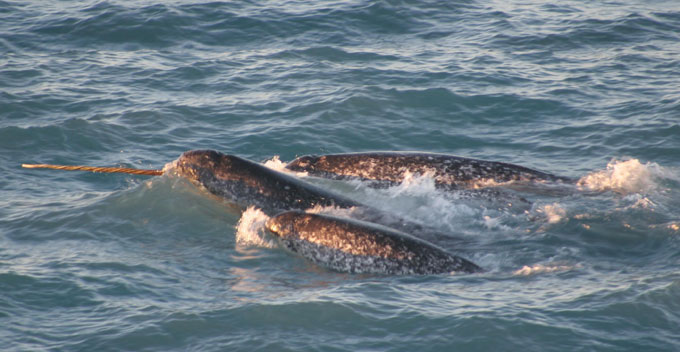SOURCE: Yale Climate Connections
DATE: Nov 11, 2018
SNIP: The high Arctic long has been seen as a vast, impassable span of ice accessed only by intrepid and daring explorers. But as more sea ice melts, the region is becoming more accessible, and travel by ship is now possible under certain conditions.
As global temperatures warm and more water opens up, vessel traffic continues to rise, from shippers seeking shortened – and more profitable – transit routes to tourists looking for new bucket-list experiences. This year, a container ship brought cargo along the Northern Sea Route for the first time, and in 2016, and again in 2017, a luxury cruise ship with more than 1,000 passengers transited the Northwest Passage.
With scientists predicting an ice-free Arctic summer possible as soon as 2040, this uptick in vessel traffic – and the projected further increase in traffic – has marine biologists worried.
University of Washington marine biologist Kristin Laidre and colleagues recently published a study in PNAS exploring the threat increased vessel traffic poses to Arctic marine mammals.
“There was room for a broad pan-Arctic look at how that might affect these ice-associated or ice-obligated marine mammals that live up there because they really haven’t experienced this kind of human activity in their evolutionary history, so it’s going to be a pretty big change for them,” Laidre says.
The team studied seven species – beluga whales, narwhals, bowhead whales, ringed seals, bearded seals, walruses, and polar bears – and examined 80 subpopulations of these animals to assess their vulnerability during the month of September. The researchers found that 42 of the 80 subpopulations they studied were “exposed to open-water vessel transits in the Arctic sea routes,” according to the paper, heightening concerns about potential conflicts.
Researchers are concerned the vessels will disturb the animals, including through acoustic disturbances. Ship strikes are another concern, especially for larger animals like bowhead whales. Pollution, such as oil spills, could also harm wildlife, though the study didn’t address that issue.
These potential threats are heightened because ships and animals both must past through narrow passageways – what the scientists refer to as “bottlenecks” or “pinch points” – during these key times. “For the same reasons the ships have to pass through, that’s where the animals have to pass through,” Laidre says.
“They have what we call high site fidelity, so they kind of always use the same areas year after year,” Laidre says. “They’re not very flexible in terms of where they might move around … They’re going to be there no matter what’s there despite the disturbances, so they’re sort of set up to basically be exposed to whatever might come with this increased shipping.”
Of the seven species studied, narwhals – a species with a growing pop-culture following and colloquially called the “unicorns of the sea” – were found to be at most risk from the increased vessel traffic.
Stressful events can cause physiological distress in narwhals, including a sharp drop in heart rate – sometimes dropping below four beats per minute – further exacerbating the threat.

